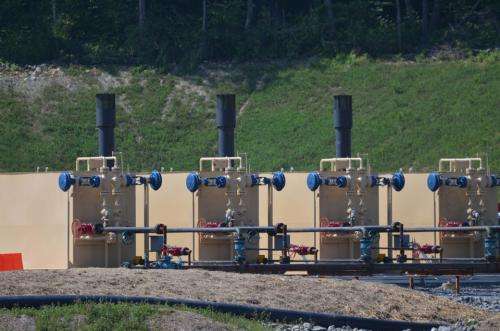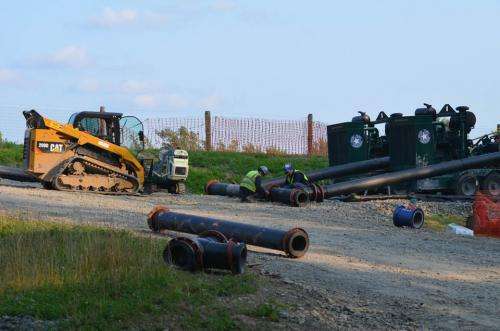Studying fracking's effects, up close and personal
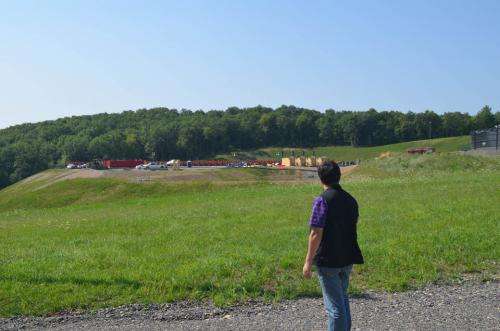
Ten years ago, hydraulic fracturing barely existed. Today 45,000 fracked wells produce natural gas, providing energy for millions of homes and businesses, and nearly a quarter of the nation's electricity. But scientists are far behind in understanding how this boom affects people near wells. Geochemists Beizhan Yan and James Ross of Columbia University's Lamont-Doherty Earth Observatory are trying to fill in this gap in rural northeastern Pennsylvania, where thousands of fracking operations have taken over formerly quiet hilltops, farms and back roads. With new wells being drilled all the time, Yan and Ross are recruiting nearby homeowners to help them test groundwater and air for potential toxins before, during and after fracking. University of Pennsylvania medical researchers studying the region have already shown that people living in heavily fracked areas have been visiting hospitals increasingly for skin, respiratory and cardiovascular ailments since the boom began in 2007. But they cannot say whether this is linked to fracking, and if so, to which of the many substances it might introduce into the environment. Yan and Ross hope to help provide that information. This photo essay shows their work over one day this summer.
Hydrofracking involves leveling out large areas with crushed stone, bringing in acres of infrastructure and heavy equipment, then drilling deep into shale layers below and injecting millions of gallons of chemical-laced water and sand to crack open gas reserves there. Each fracked well requires thousands of truckloads of rock, sand, water, chemicals and machinery; this brings diesel fumes, dust and noise. (A Lamont student recently counted 30 big rigs entering one site in just an hour.) Due to a legal loophole, the U.S. Environmental Protection Agency (EPA) does not regulate fracking fluids; in fact, in most places, even their compositions remain secret. But studies have show they can contain volatile formaldehyde, benzene or some 1,000 other substances, many of them known health hazards if leaked into air or water. Drilling also brings up dangerous natural products from deep gas-bearing shales, including salts, heavy metals and radioactive elements. Then there is the gas itself, mostly methane, which can leak from wellheads, pipes and valves into air or water. EPA estimates that leakage bleeds off 1 to 8 percent of production.
The effects are so far known mainly through a smattering of incomplete research and sometimes uncertain anecdotes. There is a film documentary showing a flaming Colorado kitchen faucet attributed to methane leakage; a court judgment this year awarding a Texas family $2.9 million from a company said to have poisoned them with air pollution. Other homeowners have brought complaints, but these are generally settled off the public record. The EPA itself has started a somewhat belated nationwide study of fracking's impacts on drinking water, but a draft is not expected until late 2014. Overall, funds for studies have remained thin. So for now, discourse on the subject is largely a war of rhetoric between energy companies who say fracking is generally harmless, and opponents who say it's not. People living near wells are caught in the middle, often not knowing what to think. "It's important to get the data, so everyone can consider this objectively," says Yan.
-
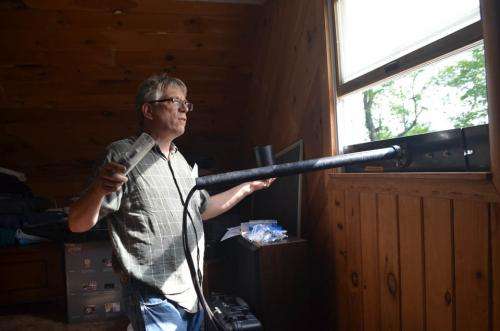
Lamont geochemist James Ross assembles an air sampler in an upstairs window of Beck’s house. It will take background readings for a couple of weeks, before drilling starts. -
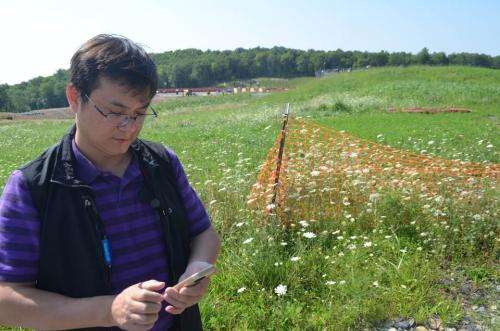
Geochemist Beizhan Yan of Columbia University’s Lamont-Doherty Earth Observatory is studying the environmental effects. His vest carries sensors to record air quality and noise levels as he walks.
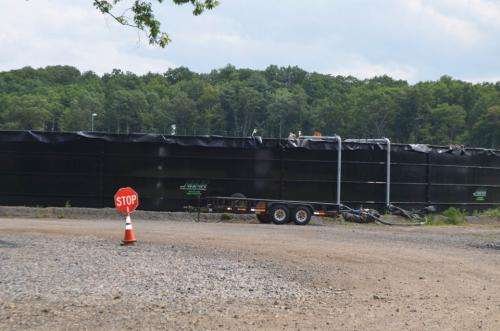
More information: "EPA's Study of Hydraulic Fracturing for Oil and Gas and Its Potential Impact on Drinking Water Resources" is available online: www2.epa.gov/hfstudy
Provided by Columbia University
